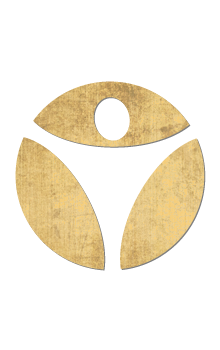Yoga for Golfers- How Can Yoga Improve Your Golf Swing?
- Updated on: January 26, 2022

Should Golfers do Yoga?
What do Rory McIlroy, Natalie Gulbis, Dustin Johnson, and Christina Stockton all have in common?
Each of these professional golfers have a yoga practice to help enhance their abilities.
Yoga is a very versatile practice that can be adjusted to offer benefits for everyone. This is why it can be a great practice for athletes everywhere, including golfers. Whether you enjoy golf just for fun, or if you play professionally, yoga has a variety of ways that it can improve a golfer’s practice.
One study even looked into the effect that yoga can have for golfers. This study involved ten male participants who practiced golf on a regular basis. The study was a six week yoga intervention. Golfers’ swings were tested both before and after the study. These were compared to a control group. It was found that pelvic rotation increased for the yoga group, making the swing more powerful for these golfers. (Graeme, et al.)
So, since professional golfers are using yoga to better their games, and since studies have been done to prove that yoga can actually improve a golf swing, it makes sense why yoga for golfers can be so helpful! Read on to see if getting on a yoga mat can help you with your golf game.
Benefits of Yoga for Golfers
So, now that we know that yoga is great for golfers, let’s take a look at why. What are the benefits of yoga for golfers? If you are a golfer, how can yoga help you?
Hip Rotation
When swinging a golf club, you are using your entire body, not just your arms. Since the whole body is involved, it is important to make sure that the joints and muscles are nice and open, allowing you to have better form and movement. Tight hips can be caused by short or inflexible hamstrings, tightness in the lower back (and vice versa), tightened hip flexors, and stiff or injured ball-and-socket joints in the hips. If your hips are extra tight it will be harder to properly rotate during a golf swing. This is why yoga can be so helpful for improving rotation of the hips and torso. Stretches like twisting chair pose or twisting lunge can be great for improving mobility in the hips, allowing for further rotation. The more you practice yoga to improve mobility and rotation of the hips, the better and more controlled your swing will be. (Capouya, 2003)
Mobility
Mobility and flexibility are very important when golfing. When you swing a golf club, the particular movement is important so that you have enough force behind your swing without hurting yourself. Having flexibility in the torso, upper back, and arms can be very helpful here. If the soft tissues are extra right and/or inflexible in these areas, you will not have as much mobility in these areas. Having a better range of motion increases the variety of swings that you can do. (Graeme, et al.)
Stretches that help to increase mobility in the torso include, but are not limited to, open-face cow arms, twisting child’s pose, cobra or sphinx pose, cat/ cow, and crescent moon pose (side-stretch).
Mindfulness and Breathwork
Believe it or not, mindfulness is actually a very important part of golf. When you are focused on your swing and holding your club, it is important to stay fully focused and aware of every bit of your stance and movement. In yoga, mindfulness is a huge part of the practice and is integrated throughout each sequence.
In addition to mindfulness, breathing techniques are also used constantly in yoga, and these can be used to calm the body while gaining control over the breath. Breathwork is important when golfing. Not only does it help to calm and focus the mind, but deep breathing actually helps to strengthen the muscles in the lungs, diaphragm, and core. By increasing core strength, you are able to have more control over your swing. Breath work also helps to keep the nervous system calm, relaxing you in the process. The more that you can focus your mind on your practice, the better. Mindfulness enhances concentration and decreases the chance of distractions.
Between mindfulness, meditation, and breathwork, yoga offers many alternative techniques for calming the mind and body.
Balance
It should be pretty obvious that balance is super important when golfing. When you are holding a proper stance when you are about to swing, it is necessary to keep the feet positioned about hip-width distance apart and fully grounded with all four corners of the feet pressing down. When you swing your club, the back heel will slightly lift from the ground as the toes hold your balance, and your front foot should stay flat on the ground and stabilized. The problem is, if you have weaker feet or ankles, and the muscles do not properly support you, you might find your feet rolling a bit. This affects the control that you have over your swing and can also be a cause of injury if you roll your foot too far.
Yoga teaches balance and helps to increase the strength in your feet and ankles.Poses like dancer’s pose, warrior III, and tree pose are great ways to work on balance and grounding down through all four corners of the foot.
Injury Prevention
By increasing mobility in the hips and torso, strengthening the muscles of the legs and feet, and becoming more mindful of your stance, you are decreasing the chance of injury when playing golf. There are many common injuries that can take place when golfing, and we will look into these more in a bit. This is why yoga is so incredibly important for golfers.

How Yoga Can Improve Golfing
Mobility in the Soft Tissues and Joints- As you now know, the more mobile you are when golfing, the better. From the hips, to the knees, to the shoulders, having proper mobility helps to be able to have more control over your swing without overextending other areas of the body. Mobile joints are also preferable to avoid injuries. Having flexibility in the muscles, ligaments, and tendons means that you are less likely to pull or tear them. Yoga can help to warm up the muscles while increasing flexibility in the soft tissues and joints of the body.
Strength and Stability- Yoga helps with balance and stability, and since these are both very important when golfing, increasing your balance will better your game. Yoga is a great way to strengthen and stabilize the muscles of the glutes, thighs, and calves. These muscles need to be strong and controlled when swinging your club to properly stabilize you. If these muscles are weaker, it becomes easier to lose your stance and slide out of your position, having less control over your swing.
Core Strength- Did you know that core strength is an important factor when golfing? If you have a weak core, your balance will suffer, and you will have a less controlled swing. In addition, you are constantly bending down and folding forwards when swinging a golf club, and if your core is weak, you might eventually find that you are rather sore in your back and neck from improper posture. Yoga helps build up core strength and promotes better stability for your spine and your overall balance through doing so. This makes it easier to hold your stance for longer and to have better control over it.
What Kind of Yoga is Best for Golfers
The right kind of yoga depends on each individual person. However, there are a few yoga practices that are especially helpful for those looking to improve their golf game. Let’s take a look at what types of yoga might be best for golfers.
Power Yoga- Power yoga is a type of vinyasa yoga that involves holding the standing poses for longer. This really engages the muscles and stabilizes the joints so that you can get used to holding specific stances for longer, increasing your balance, strengthening your core, and enhancing stability. At the same time, you can also increase flexibility in a power yoga class through deep stretches that are held for longer. This practice is more challenging, making it great for athletes and enhancing one’s endurance.
Yin or Restorative Yoga- Although these practices involve a lot of time being still on the mats, they are both wonderful for increasing flexibility. Restorative yoga is better for those who are looking to restore their bodies after injuries and yin yoga is especially helpful for stretching and increasing flexibility in the muscles. Both of these practices promote mindfulness and comfort in stillness while enhancing mobility of the body, making them great for golfers. Since golfers must be focused and often hold still for long periods of time during a swing, you can see how yin and restorative yoga can both be great options for enhancing one’s golfing abilities.
Body By Yoga’s Slow-Burn Power Yoga- The majority of our yoga classes are made up of our special slow-burn power yoga classes. Like a typical power yoga class, we introduce challenging poses, but then we have you hold them for even longer, taking your time to really experience each one. We also include a lot of education in our classes so that you learn about why you are doing certain poses, and how you can continue to properly do them on your own at home. This is why we recommend checking out our many programs, especially Yoga Edge, to learn more about what we have to offer and how we can help you improve your golfing abilities.
Common Injuries of Golfers
Tendonitis
Tendonitis is the inflammation of one’s tendons. This can happen anywhere in the body and can cause a lot of pain. Tendons are the soft tissues of the body that connect muscles to bones, allowing movement of the bones. When these tendons are overused or injured, they can become swollen. In golf, the most common places where tendonitis is seen would be in the wrists and elbows from the force that they take when swinging a club. In fact, there is even a name for tendonitis in the elbows known as golfer’s elbow. The repetitive movements of golf can eventually put too much stress on the tendons of the elbows, making them feel sore and tight. This can also cause discomfort to the hands and wrists because of how the tendons connect.
Yoga can help with preventing tendonitis by promoting deep stretches in the tendons throughout the body and improving their mobility. This allows the tendons to be stretchier, taking less impact during golf swings, and making them more mobile during repeated movements.
Back and Neck Pain
Due to the fact that the back is often rounded when swinging, and the back of the body takes a lot of pressure, it is easy to see how the neck and back can be injured when playing golf. In fact, back pain is one of the most common golfing injuries. Low back pain is especially prevalent in golfers from muscle strain, intense rotation, and quick motions during swings. Since golf can negatively impact one’s posture from standing incorrectly, having a yoga practice can help to realign the spine, promoting the natural curve of the back and proper posture.
When dealing with back and /or neck pain, certain yoga poses might be more uncomfortable to do, especially the ones with deep backbends. For example, if you were to do bridge pose, this might be a lot on the lower back. Using a block under the glutes here would be helpful.
Joint Pain
Just like the tendons, the joints take a lot of pressure when golfing. This can cause pinching and even swelling in the muscles of the joints, especially in the ball and socket joints. If used incorrectly, joints can easily be injured. This is most commonly seen in the rotator cuff. Injuring rotator cuffs can happen quite often when golfing, and is even one of the most common injuries. Other commonly injured joints include the knees, hips, elbows, and wrists. Yoga helps to increase rotation and mobility in the joints while promoting their stability. This makes it less likely to injure them. If you deal with joint pain but want to start a yoga practice, you can always roll the end of your mat or use pads beneath the particularly sore joint for extra support.
No matter what injuries you might be dealing with, please make sure to ask your instructor ahead of time if there is anything you should avoid doing in your yoga practice, and what should be modified, to ensure your safety.
How to Incorporate Yoga into Your Routine When You are a Golfer
As you can see, there are many ways to incorporate yoga into a golfer’s routine. Using yoga for warming up and practicing on rest days is a wonderful combination to keep your golf game at its best.
Warming Up- Using yoga stretches to warm up before a game of golf can be a great way to prepare your muscles and decrease the risk of getting hurt. Practicing some twists (like lord of fish pose), doing some chest and shoulder openers (like cow face arms), and incorporating hip openers (like reclining figure four) are great ways to warm up the body before a game. Since golfing does not include a lot of running or fast-movement, it is safe to practice right before playing to warm up the muscles.
For Recovery or Cool Down- If you are sore after a game you can also do yoga right after playing as a way to allow the body time to rest and recover while releasing sore muscles. Restorative poses (like reclining twists, seated forward folds, and reclining bound angle) are great poses for cooling down after a game.
Moving on Off-Days- If you already have an intense workout routine, using yoga as a way to move on your rest days can be a great way to incorporate the practice into your life. Rest days are meant to give your body time to recover and relax so that the muscles can recover. Gentle practices like yoga can be a wonderful way to stay moving on off days. Practicing yoga about two to three times for week for about at least thirty minutes each time can really improve one’s golf game.
Mindfulness, Meditation, and Breathing- Certain yoga practices can actually help to enhance your practice without requiring much movement. Yoga actually involves eight separate limbs with poses being just one of them. Breathing and multiple levels of meditations are also included in these eight limbs and are just as important as the movements in yoga. Anybody can take time each day, even just for a few minutes, to either meditate, focus on the breathing, or even just to practice mindfulness. Even the practice of focusing the eyes on an unmoving point when balancing can be used when swinging. These practices are also wonderful to do right before golfing since they can help to promote focus and calm one’s mind, making one more prepared to golf.
Best Yoga Poses for Golfers
Improve Shoulder and Arm Mobility- Wide Leg Forward Fold with Arms Behind You
This is a great pose for increasing the mobility and rotation in the shoulders while stretching the muscles of the arms. To do this pose, step the feet out to the sides as far as you comfortably can and turn your toes away from your body. Reach the arms up to the sky as you breathe in. As you breathe out, hinge from the hips and fold forwards, bringing the arms down by the sides and then back behind you as you reach them towards one another. If you cannot join the hands together, just reach them in the direction of each other. You can also use a strap here, holding it in your hands. From here, continue to fold forwards as you reach your arms up and away. If you have any injuries in your shoulders, you might want to avoid this pose altogether. After about five breaths, or whenever you are ready, inhale to come back up and exhale the arms back down by the sides.
Improving Mobility and Rotation of the Hips and Abdomen- Revolved Chair Pose
Having proper mobility and rotation in the hips and abdomen is incredibly important when golfing to allow for proper swinging. Revolved chair pose is a great way to increase rotation in the hips and the sides of the body. To do this pose, begin by stepping the feet about hip-width distance apart from one another. Then, bring your arms up at an angle and bend into your knees, sitting the hips back as if you are sitting in a chair. For more traction here, you can always have a block between the thighs.
Now, to bring the rotation into the pose, take your hands together at heart center with your elbows out to the sides, and twist to your leg, bringing your right elbow to your left thigh as you keep your spine long and your heart open. If you would like to deepen the pose even further, you can reach the right arm down towards the ground, placing the tips of the fingers on the ground or on a block as you reach your left arm straight up from the sky. As you twist here, your arms should create a straight line from the tips of your left fingers to the tips of your right. After about five deep breaths, inhale to unwind back to center, and, staying in chair pose, repeat on the other side.
Stretching the Hamstrings and Thighs and Increasing Balance- Dancer’s Pose
This pose is wonderful for increasing one’s balance while allowing for a deep stretch in the hamstrings, thighs, glutes, and even the arms and shoulders. To do this pose, start by grounding down through the right foot and inhale to bring the left knee up. As you exhale, stretch the left leg back behind you, and reach your left arm back, grabbing ahold of your foot or ankle. If you can not reach, feel free to use a strap here and loop it around the foot, holding it in your hand. From here, inhale to bring the right arm up, and exhale to press the left foot further into the hand or the strap, deepening the pose. Hold this pose for about five breaths and then inhale to come out of it and exhale your foot back down. Do the same on the other side.
Opening the Chest and Upper Back- Sphinx Pose
This is a gentle pose that allows deep stretching in the chest and upper back, keeping the chest nice and open, and allowing for more mobility when swinging. To do this pose, start on the belly with the legs straight back behind you and the elbows tucked into the sides with the palms and forearms flat on the ground. Keeping the muscles engaged here, press down through the hands and lift the chest up as you inhale. As you exhale, open further through the heart, using your back and arm muscles to hold you up. Keep the spine nice and long here. If you need more assistance here, you can place a block beneath the chest. You can also roll the front of your mat beneath your elbows here if you experience soreness in them. Hold the pose for at least five to ten deep breaths before exhaling to come back down.
Stretching the Hips, Thighs, and Groin and Increasing Rotation- Twisting Lizard Pose
Lizard pose is great for opening up the hips and thighs while increasing flexibility in the groin. When adding in the twisting aspect to this pose, you are enhancing the mobility in the sides of the body, the hips, and the abdomen. To do this pose, you can start on the hands and knees and step one foot forward outside of the hands, bringing the foot flat to the ground and bending into the knee. From here, tuck the toes of your back foot and list the knee up. You also have the option to keep the knee on the ground for an easier variation of the pose. You can either keep the hands on the ground, come down to the forearms, or bring the hands or forearms to a block for more support. Stack the spine, hugging in the core. From here, you can either stay where you are, or, if you want to add a twist, drop the back knee to the ground and inhale the foot up. On the exhale, reach the hand of the same side as the back foot behind you, grabbing onto your ankle. If you can not reach, use a strap here around the back foot instead. Hold this pose for at least five breaths and then repeat on the other side.
Best Body By Yoga Programs for Golfers
Did you know that Body By Yoga offers a variety of yoga programs for you to choose from? For golfers, we recommend checking out our Yoga Edge program which is meant for athletes. Involving multiple workouts for all athletes of all abilities, this practice will help you to strengthen your muscles and joints so that you can increase your endurance over time. This practice is great for runners, swimmers, cyclists, weight lifters, and even golfers! Check it out here!
Reference: Capouya, J. (2003). Real men do yoga: 21 star athletes reveal their secrets for strength, flexibility, and peak performance. Health Communications. Graeme G. Sorbie, Chris. Low & Ashley K. Richardson (2019) Effect of a 6-week yoga intervention on swing mechanics during the golf swing: a feasibility study, International Journal of Performance Analysis in Sport, 19:1, 90-101, DOI: 10.1080/24748668.2019.1566845
Recent Posts
Categories
Related Articles
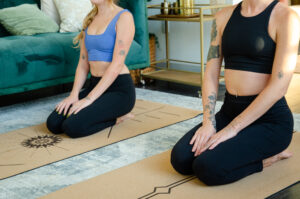
Breathing technique to improve your yoga practice
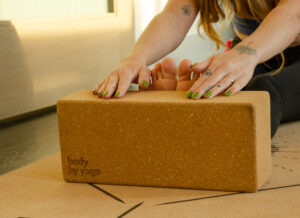
Benefits of yoga before bed
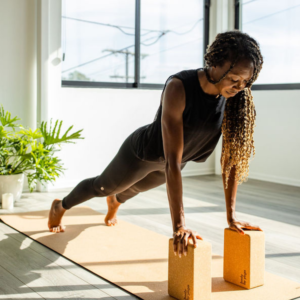
Taking the next step to more challenging yoga
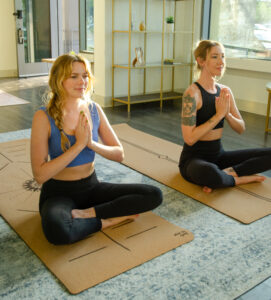
Hatha vs Power yoga
Related Articles
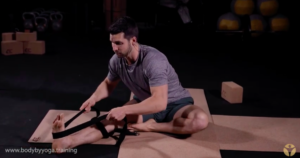
Good Stretch For Lower Back And Hamstrings
This stretch can be done before or after a workout. It’s simple, but very effective. Stretching your legs can help alleviate back pain as well.

Taking the next step to more challenging yoga
Yoga is for anyone at any level. We want everyone to feel challenged in their practice so we’ve created all-inclusive classes that will help improve
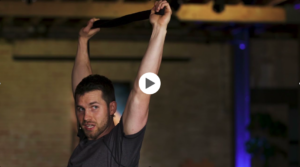
Mini sequence for beginners
We created this video for a quick sequence to stretch and build strength in your hips and shoulders. We start the video touching on
